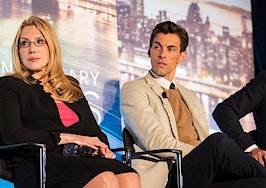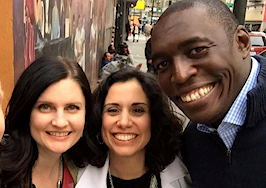- The generational divide has never been more significant or more discussed.
- Breaking the silo mentality will drastically improve our ability to serve, which is the very crux of our business.
There are some known facts in the real estate industry:
- The average age of a real estate agent (58 years old) is significantly higher than that of a homebuyer (32 years old).
- The industry is challenged to attract young professionals.
- The generational divide has never been more significant or more discussed.
- Technology and communication channels are constantly evolving and often adopted at different rates across generations.
What’s one word that can address all of these challenges? Collaboration.
Collaboration takes time and must be strategic. If done right, it can bridge the widest generational and competency gaps we’ve ever seen in real estate.
If the collaboration between Lady Gaga and Tony Bennett — “Cheek to cheek” — can go no. 1 on the Billboard charts, there should be no collaboration too difficult for real estate.
Lessons learned from Lady Gaga and Tony Bennett
Gaga definitely benefited by teaming with Bennett: News of her meat dress and egg entrance finally took a back seat to her voice. Her true expertise was showcased, and she was taken more seriously as an artist.
Bennett also benefited as the song revived his relevance and introduced him and his music genre — jazz — to a multigenerational audience who might not have known him otherwise.
Think about how applying this multigenerational approach to the following aspects of your business can foster growth and success.
Creating a sales team
Having the right mix of ages, competencies and experiences is the foundation for creating multigenerational strategies.
When someone says, “I’ve been in the industry for over 20 years,” you instantly deem them wise, but do you see them as cutting edge?
Think about the value you would gain by combining experience with fresh perspective. Think about how much more you would achieve by focusing on creating innovation and avoiding friction.
A multigenerational sales team will offer something to each facet of the marketplace.
Talent attraction
While entrepreneurship is a major draw for younger generations, so is teamwork.
Are we so hung up on personal branding that we make real estate into an “every agent for themselves” industry? It doesn’t have to be that way.
Consider the draw for young people if they could align themselves with established market professionals. A mentorship mentality provides comfort for beginners and reminds them that their efforts will be rewarded, a paycheck will come and their student loans will get paid.
On the flip side, more seasoned professionals have just aligned themselves with new market and communication intel. The hottest locations are always changing and marketing is much more social; these millennials could be your ticket to the next level of success.
Prospecting
When searching for services, we tend to seek out those we share common ground with. It may not be apparent at first, but once we find that connection, there’s an added level of comfort and trust.
As a first time homebuyer, I may love the idea of partnering with someone my age who is going through similar life stages, but does that person have the knowledge that comes with experience?
On the other hand, will an older agent in a different life stage have any idea what I’m looking for in my life?
Think about how your consumers would benefit from a multigenerational team, especially in the luxury sector. For many professionals, it takes a significant amount of time to break into the high-end luxury market, and you have to wonder how many affluent consumers would entrust a green agent with their multi-million dollar property.
Perhaps it’s time to break the silo mentality and start combining the power and knowledge of different generations. Doing this will drastically improve our ability to serve, which is the very crux of our business.
Adam Lerman is the Vice President of Talent Management at Engel & Völkers. You can follow him on Twitter or LinkedIn.






